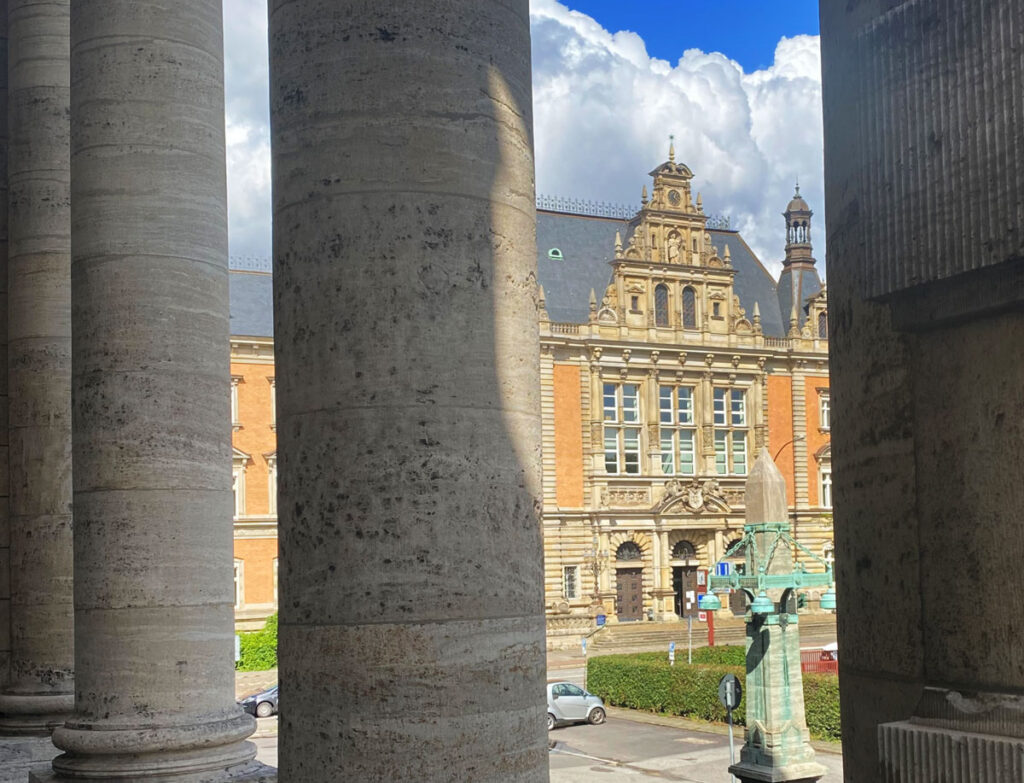JUSTICE FORUM
Ensemble of three courthouses on Sievekingsplatz

Sievekingplatz: A journey through the history and architecture of justice
In the heart of Hamburg, not far from the lively city centre, lies Sievekingplatz – a place of architectural beauty and historical significance. It is dominated by an ensemble of three majestic court buildings, which together form the centre of Hamburg’s judiciary. For tourists looking for exciting stories away from the familiar harbour and warehouse district motifs, this square is a real gem.
The High Court
The first building that catches the eye is the Higher Regional Court building. It was constructed between 1907 and 1912 and impresses with its opulent façade and imposing entrance portal. Designed by architects Lundt & Kallmorgen, it reflects Hamburg’s economic boom and was intended to underline the city’s importance as a trading centre. The interior is equally magnificent, with an atrium crowned by an impressive glass dome. Important civil law cases that shape the fortunes of companies and private individuals have been and continue to be heard here.


The Criminal Justice Building
Right next to it stands the criminal justice building. It was built between 1879 and 1882 in the Neo-Renaissance style according to plans by architect Hans Zimmermann. With its turrets and size, it resembles a palace. Several sensational trials were held here, such as the appeal proceedings surrounding the rapper GNUZ.
The Civil Justice Building
The most recent and striking building is the civil court. It was also designed by Hans Zimmermann and is located opposite the criminal court. The civil court building was constructed between 1898 and 1903, with a semi-circular extension added between 1928 and 1930. This extension was designed by the legendary architect and then Chief Building Director Fritz Schumacher.
Together, these three buildings form a fascinating architectural triumvirate that reflects the development of the judiciary and the city of Hamburg itself over more than a century. Sievekingsplatz is thus more than just a court location; it is an open history book made of stone and an impressive testimony to Hamburg’s architectural and legal history.

